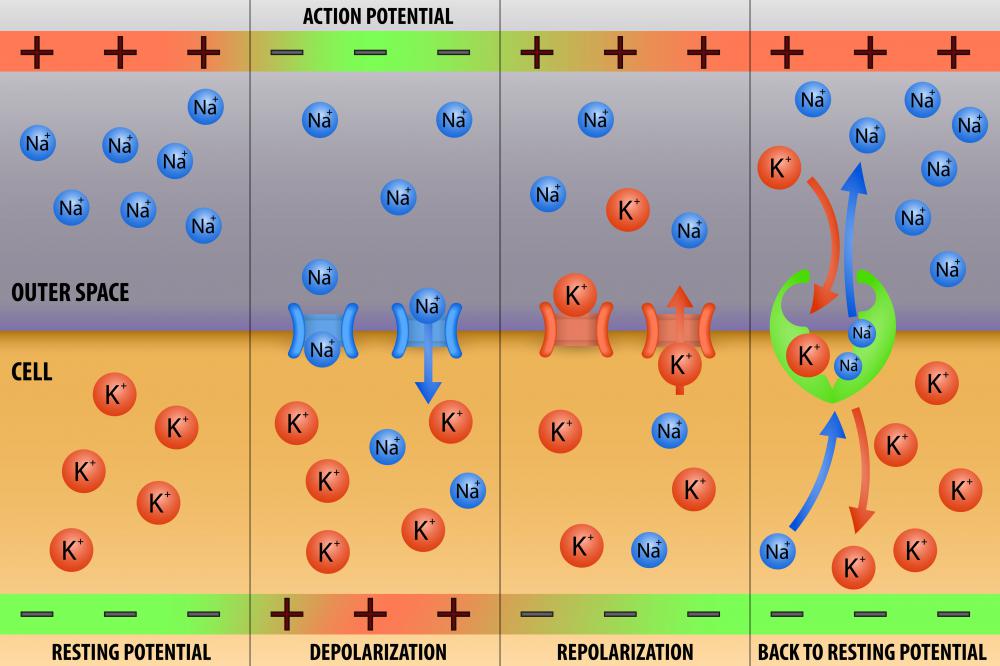At WiseGEEK, we're committed to delivering accurate, trustworthy information. Our expert-authored content is rigorously fact-checked and sourced from credible authorities. Discover how we uphold the highest standards in providing you with reliable knowledge.
What Is the Relationship between Depolarization and Action Potential?
The relationship between depolarization and action potential is that depolarization is the spark that starts the whole process. Action potentials are largely responsible for the transfer of signals throughout the nervous system. The beating of the heart, contraction of a hand, or signal to run away all depend on nervous system activity initiated by action potentials.
Depolarization and action potential are directly related throughout the body with the exception of certain aspects of eye physiology, in which hyperpolarization causes action potential. Polarization, in a sense, refers to taking sides or the opposite ends of a spectrum. In terms of electrical charge, depolarization means to unpolarize an already negative charge. Hyperpolarization, conversely, refers to making a negative charge even more negative.

Action potentials do not generally occur on their own; they need a sort of stimulus to get things going. This stimulus may come from another nerve or could be due to an external force or trigger. In either case, a complex chain of physiological events occur to allow ions to flow in and out of a cell's membrane, causing depolarization and action potential.

An ion is a charged particle, and as gradients build inside and outside the cell, the potential for ionic movement increases. A stimulus opens gates that allow for the influx and efflux of these ions, causing the charge of the cell with respect to its environment to move toward zero. This depolarization reaches a point known as threshold, which is when an action potential is released. Once initiated, most action potentials perpetuate other action potentials in a manner that causes a stark increase in nerve activity. This usually culminates in the release of a substance known as a neurotransmitter, which then reaches proximal nerves and causes them to act in specific manners.
There are both inhibitory and excitatory actions caused by depolarization and action potential. This means that, depending on the rate of action potential, they may cause increases or decreases in other affected nerves. This entire event is ephemeral in nature, often lasting but a millisecond.
Depolarization and action potential are directly related. When a stimulus causing cell membranes to open in turn causes depolarization, action potentials fire. This event helps cells communicate important information to one another. Without the seemingly impossible communication between cells, the body would not be able to sense and react to the environment as a cohesive unit.
AS FEATURED ON:
AS FEATURED ON:












Discuss this Article
Post your comments